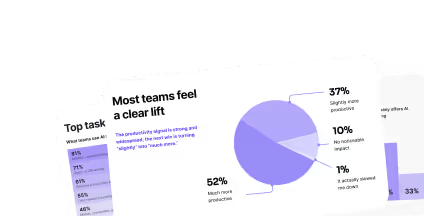Uxcel Recruit worked with Ignacio Nicolas Aguirre from RED (Rehabilitation Enables Dreams) to help them find and hire a professional and reliable designer in less than a month.
In this interview, Ignacio explains their team’s challenges in finding the right design person without professional assistance. You’ll learn why knowing design principles may not be enough to find a genuinely competent designer.
What are your main responsibilities?
I'm the lead software engineer at Rehabilitation Enables Dreams. My primary responsibilities are designing, planning, and developing this learning management system for Rehabilitation Enables Dreams.
That involves everything from systems of the user experience of what designs go in, what designs don't go in, how we design the platform from a data perspective, hiring the right people to fix the correct issues, and delivering the best product for our customers. So I guess I’m not only the lead software engineer but also kind of like the product owner. It's a varied role, and I wear a lot of hats.
How would you describe your company?
RED is a restorative justice program. We deal with first-time nonviolent felony offenders between ages 18 and 28 in the United States.
We expose them to this one-year program where we teach them every life skill, from financial intelligence and emotional intelligence to civic and social literacy. We help them get their GED. It's a complete program. And by the end of the year, we do this thing called record restriction, meaning that felony that would appear on their record doesn't appear anymore. This means they can apply for jobs, housing, loans, and many other things that they couldn't in the past because they have a record.
We also provide employment opportunities, housing opportunities, mentors events, and other things to put these kids back on track. We currently have around a 90% success rate. And to give you a comparison, the state has around a 40% success rate when rehabilitating people.
How you were hiring designers before Uxcel?
I used the traditional routes of hiring designers using job postings and reaching designers on Dribbble, LinkedIn, and Fiverr. We were working with a designer before contacting Uxcel, but we had to part ways because he wasn't committing enough time, and we just needed somebody who could put in more time and produce quicker results. He was extremely talented, but he had other projects going on that just didn't fit our schedule.
What costs and primary pain points were associated with your previous solution(s)?
It's tough to find people who you trust and who are competent. I had to look for many designers, and some of them were professionals. You can find outstanding UX talent, but sometimes it's costly. Some people charge like $50 per hour in this industry, and we can't afford that. So the most significant pain point is finding high-quality designers at the proper budget.
When did you first hear about Uxcel Recruit?
I started as a Uxcel learner who used your tool to improve my design skills. When I started looking for a designer, I stumbled upon Uxcel Recruit, I booked a demo, and boom, I spoke to a talent coordinator that same day.
What’s the key advantage of Uxcel Recruit for you?
The speed and quality to deliver amazing designer candidates! I want to say the whole process lasted between two and four weeks. From the second I clicked to the moment I had a designer, it was less than four weeks. Uxcel Recruit was extremely quick. I want to say you got me.
And to find the candidate I hired, it took even lesser time. From the second I reached out to Uxcel, it was about a week or two. But then I remember I wanted a couple more candidates to interview, but I ended up going for the one you suggested first.
The main advantage was you guys got me precisely what I wanted — a very talented designer at the right price and for a specific type of job. I mentioned that I was building a learning platform, so preferably I wanted somebody who has worked on something similar in the past. Uxcel was able to find those top three criteria like budget, quality designer, and the right experience for the right job.
What have you liked about Uxcel Recruit results?
So far the team absolutely loves Alexandra! The feedback has been that she’s really kind, her work is fantastic, and she’s elevated the overall user experience.
How do you feel about your primary pain points now?
I've taken a couple of design courses, so I'm familiar with design best practices, which made it easier to recognize if they were a competent candidate, even when working with them. I'm like, “Hey, why did you align this thing this way?,” or “Hey, there seems to be too little contrast on this screen.” I have some design concepts that I apply, which helped a lot. So I was pretty confident I could hire somebody that builds things that look good and also work well.
But also, I'd rather have an expert tell me if they're a good designer or not 100% because I am not an expert on these fields by any means. I know exactly what to look for when interviewing other engineers as a software engineer myself. With a designer, it's far more complicated. I know how to expose weaknesses, but on UX, I might miss more things. So I'd rather have a company like yours to tell me this is a sound designer, and then I can figure out if I like her or not.
What was the impact?
Just isolating the process of fixing issues in terms of experience and good looks is great because it gives me room to think more strategically about what we should do. After all, there are a lot of problems we fixed on the platform that doesn't look good.
So transferring all that to a new designer opens up my headspace to focus on other things like strategy, what games or whatever we can build, or just work more with the team or with the students we're serving. It's great to have that part of the process isolated. I just have to say we have an issue. For example, we need a table to handle all the student's progress, and then a designer takes that and runs with it. I need to give them the problem, and then they handle the rest.
Overall, the team's performance has also improved. We encourage both designers and non-designers to take skill tests, participate in UX design challenges, or engage with theory through courses. These activities greatly improve the UX team without requiring excessive effort, time, or financial resources.
Was your investment in Uxcel Recruit worthwhile?
100%, I would do it again and recommend to any company that wants to improve UX hiring process.




%20-%20red.png)
.svg)
.svg)
.svg)
.svg)
.svg)
.svg)
